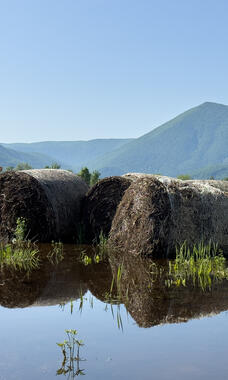Any flood or major rainstorm that generates significant runoff could contaminate your water supply making it unsafe to drink. Find out what you need to do.
Arsenic is a natural element found in some rocks and soils in Vermont and may get into groundwater.
Explore Health Data Atlases and Dashboards Many Vermont public health map atlases and dashboard-styled reports are available on a per-topic basis. These atlases and reports also allow viewers to download data in commonly used formats.
Manufacturers who use chemicals designated by the State of Vermont as Chemicals of High Concern to Children, must report information about these chemicals to the Health Department.
The Vermont Department of Health worked with the Agency of Agriculture to investigate the misue of the pesticide chlorpyrifos in treating residences in the Rutland area for bed bugs and other pests.
What You Need to Know About Coliform Bacteria in Drinking Water Coliform bacteria are one of the most common water contamination problems in private water systems in Vermont and throughout the U.S. Coliform is a family of bacteria common in...
What You Need to Know About Copper in Drinking Water Copper is an essential nutrient for the human body and is found in some foods. It is also a metal commonly used in home plumbing systems and can get into...
Private water supplies are monitored and maintained by their owners, so it is important for them to do their own water testing and maintenance to make sure their drinking water remains safe.
Dry cleaners use chemicals to clean clothes and other fabrics. When these chemicals are breathed in, they can be harmful to your health. They can remain in the environment for decades.
Gross alpha radiation is a type of energy released when certain radioactive elements decay or break down and can be found in your drinking water.

